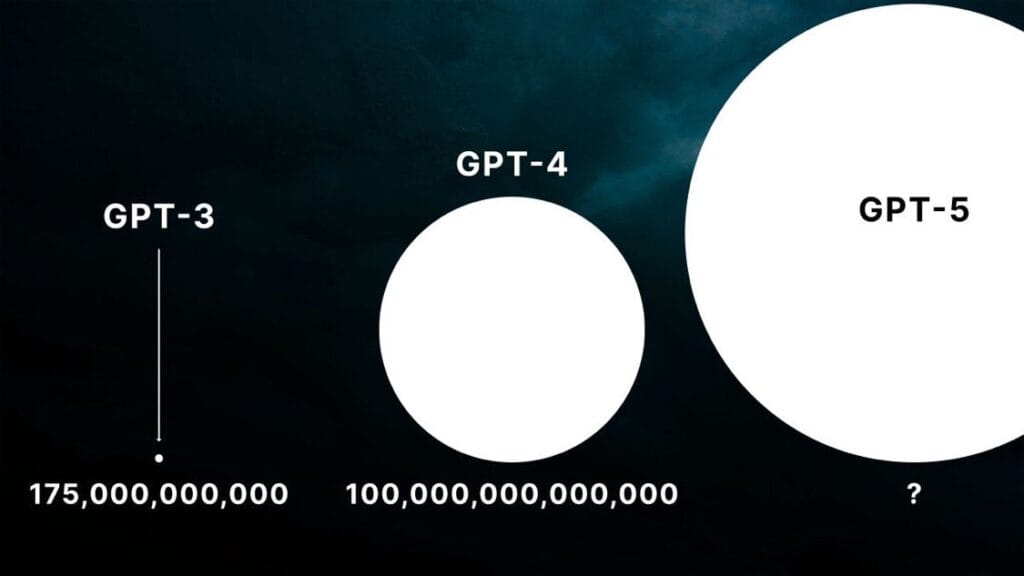As of April 2025, the evolution from GPT-4 to GPT-5 signifies a substantial leap in artificial intelligence capabilities. This comprehensive comparison delves into the key differences between these two models, highlighting advancements in architecture, performance, and practical applications.
🧠 Architectural Advancements
GPT-4: Built upon the Transformer-based architecture, GPT-4 utilized supervised learning techniques. It featured approximately 175 billion parameters, enabling it to generate coherent text and perform various language tasks effectively.
GPT-5: GPT-5 introduces a hybrid architecture that combines graph neural networks with advanced attention mechanisms. This design enhances its ability to understand complex relationships and contexts within data. Additionally, GPT-5 employs unsupervised learning from a more diverse and extensive dataset, allowing it to adapt more flexibly to various tasks.
⚙️ Performance Enhancements
Parameter Count:
GPT-4: Approximately 175 billion parameters.
GPT-5: Expected to exceed 200 billion parameters, providing greater computational power.
Context Window:
GPT-4: Capable of handling up to 25,000 words in a single interaction.
GPT-5: Doubles this capacity, managing up to 50,000 words, which allows for more extensive and coherent dialogues.
Processing Speed:
GPT-4: Standard query response time of approximately 15 seconds.
GPT-5: Significantly faster, with response times ranging between 2 to 3 seconds.
Accuracy:
GPT-4: Demonstrated an accuracy rate of about 87.2% in general knowledge tasks.
GPT-5: Aims to improve upon this, with enhanced training techniques and data diversity potentially increasing accuracy and contextual relevance.
🎨 Multimodal Capabilities
GPT-4: Introduced basic multimodal functionalities, allowing it to process both text and images to a certain extent.
GPT-5: Expands upon this by seamlessly integrating text, images, and audio inputs. This advancement enables GPT-5 to interpret and generate responses based on a combination of different data types, enhancing its versatility in various applications.
🧩 Reasoning and Problem-Solving
GPT-4: Capable of handling complex problem-solving tasks better than its predecessors, with improved reasoning abilities.
GPT-5: Demonstrates superior proficiency in tackling intricate tasks, such as mathematical problem-solving and logical reasoning. It employs advanced chain-of-thought techniques, allowing it to break down and address complex requests more accurately and in detail.
🌐 Multilingual Support
GPT-4: Primarily designed for English language processing, with limited support for other languages.
GPT-5: Offers comprehensive multilingual support, facilitating language translation and content creation across diverse linguistic backgrounds. This enhancement makes GPT-5 a valuable tool for global communication and collaboration.
🛡️ Ethical Considerations and Bias Mitigation
GPT-4: Incorporated ethical guidelines to minimize harmful or biased outputs, though some issues persisted.
GPT-5: Significant efforts have been made to reduce biases in responses, ensuring fair and unbiased communication. Enhanced filters and guidelines help prevent the generation of inappropriate or harmful content, prioritizing user safety.
🧠 Real-World Applications
GPT-4: Widely used in various applications, from customer service to content creation.
GPT-5: Expands these applications further, potentially integrating advanced features like real-time data analysis and enhanced personalization capabilities. Industries such as healthcare, legal analysis, and personalized education stand to benefit from GPT-5’s advancements. Its enhanced ability to understand complex relationships and its more sophisticated problem-solving capabilities could revolutionize how professionals in these fields interact with and leverage AI.
📈 Cost and Accessibility
GPT-4: Offered at a standard cost, making it accessible for various users and applications.
GPT-5: While it may come with a higher upfront cost, its improved efficiency and capabilities could lead to potential savings over time, especially for businesses handling sensitive data or requiring advanced analysis.
🔗 Conclusion
In summary, GPT-5 represents a significant advancement over GPT-4, offering improvements in architecture, performance, multimodal capabilities, reasoning, multilingual support, ethical considerations, real-world applications, and cost-efficiency. These enhancements position GPT-5 as a more powerful and versatile tool for various industries and applications. For a more detailed analysis of the differences between ChatGPT-4 and ChatGPT-5, see more: marketbuzznow



